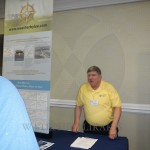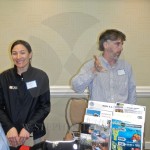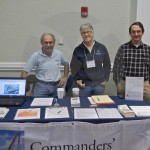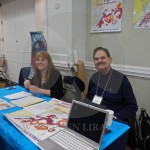the story from sailing anarchy
Bryan Chong is a surviving crew member of the Sydney 38 Low Speed Chase which lost the lives of five people during the disastrous Full Crew Farallones Race in San Francisco. Here, he tells his story.
 This letter goes out to a devastated sailing community still confused about the events surrounding the 2012 Full Crew Farallones Race. There have been inaccuracies in the media, mostly stemming from the survivors’ silence as James (“Jay”), Nick and I are still reeling from tragedy and the loss of close friends and loved ones.
This letter goes out to a devastated sailing community still confused about the events surrounding the 2012 Full Crew Farallones Race. There have been inaccuracies in the media, mostly stemming from the survivors’ silence as James (“Jay”), Nick and I are still reeling from tragedy and the loss of close friends and loved ones.
I’ve chosen to use Sailing Anarchy for distributing this story because they’re of a kindred spirit and were the favorites amongst the crew of Low Speed Chase and those who already know the answer to the question, “Why would you sail in the ocean on a windy day with big swells?”
I’ve also included the Marin Independent Journal and The Tiburon Ark, as they’re the hometown newspapers in an area teeming with sailors. Many sailors relocate from around the world to Marin and the Tiburon Peninsula in order to live in proximity to the world’s best sailing. Alan Cahill moved from Cork, Ireland to race sailboats professionally in the Bay Area and the Pacific Ocean. He was the best man in our wedding and will be dearly missed while I journey this planet.
This letter does not contain every detail, but my account should provide a basic understanding of our day on the water and what happened after the first wave hit our boat. It is meant both to illustrate how things can look normal until one event changes everything and to begin to address what we can learn. It’s my hope and intention that it will spark a wider dialogue within the sailing community about safety standards and, more importantly, safety practices.
Why do we sail?
A sailor’s mind set is no different from that of any other athlete who chooses to participate in a sport that has some risk. It’s a healthy addiction. Despite the highly publicized deaths of Sonny Bono and Michael Kennedy, skiers all over the world continue to hit the slopes each winter. Sitting on the couch is safer than ripping down a slope, but the reward makes the risk worthwhile.
Next, we should all agree there are a wide variety of interests within the sailing community. Some sailors prefer racing to cruising, small boats to big, or lakes to oceans. We all make personal decisions about the risks we’re willing to take to enjoy our own brand of sailing.
Naturally, I have personal preferences. I most enjoy one-design and ocean racing. I generally consider sailing to be at its finest when you’re coming around a mark alongside 20 identical boats, or when you’re in the ocean with a kite up on a windy day, the wave action is perfect and you’re surfing downwind at speeds usually reserved for powerboats. I was a guest crew member on Low Speed Chase and I got the sense the others were seeking the same downhill ride back from the Farallones as I was. There were eight sailors on board: one professional, six experienced sailors and one sailor excited for his first ocean race.
The Start Line
It’s Saturday April 14, 2012 around 8:30 in the morning. Seven of us are aboard Low Speed Chase as we leave the San Francisco Yacht Club in Belvedere. We head across the bay and swing through the Golden Gate Yacht Club in San Francisco, where Jay hops on from the docks. We motor to the St. Francis race deck start line. Alan grabs the handheld and with the brevity learned from years of flying small planes says, in a heavy Irish accent, “Farallon Race Committee, Sydney 38 Low Speed Chase 38009. Checking in. 8 souls on board.” No response. He repeats and the voice on the receiver sounds back, “Confirmed, Low Speed Chase. Thank you.”
We raise our sails as we traverse the starting area, checking currents and winds and working out a starting strategy. Meanwhile, the crew double-checks sails, lines, safety equipment, and clothing layers. Today our starting strategy, unlike buoy racing in the bay, is simple: avoid an over-early penalty. This is especially true given the light winds and ebb tide.
A few minutes before the start, someone notices that the reef line for the main isn’t tied. Our new Quantum sails were delivered only a couple of days before. They still have that stiff new-sail feel that never lasts long enough. It’s going to be a windy day and we need to rig it before we get out in the ocean. I have a harness in my sail bag but Nick is already wearing his. He clips into a halyard and 5 feet up he goes to tie on the line. Alexis grabs his foot to guide him down the boom, and after a few minutes we are ready to get underway.
“Boom!” First Gun
We are well behind the start line but as the countdown continues we realize our distraction has taken us slightly outside the starting box. The air is still and we’re trying to trim our sails to squeeze everything we can from one knot of wind.
The start gun goes off and we’re still fighting to get inside the box. Ebb is not our friend today and we soon find that we’ve drifted past the start line without going through the designated gate, so we’ll have to backtrack for a proper start. The pressure seems to be hiding just under the Golden Gate Bridge, almost like it’s mocking us. It kind of reminds me of Friday night races in Belvedere Cove when the wind shuts down right before the start but continues to tease you from out in the bay.
Already critical of our “start”, we anxiously wait for the wind to fill so we can make it back to the line. “Should we pop the kite?” gets floated for a second but it’s killed when the wind dies to nothing. We’re floating backwards toward the bridge and our drift takes us abeam of Anita Rock. We decide to anchor to prevent any more backwards “progress”. Jay pulls the anchor from down below and Jordan heaves it into the bay from the bow. Other boats that have started the race now begin to sail – rather, float – past us. A few find humor in our plight and aren’t shy to share. Even Berkeley, a regular crew member on Low Speed Chase who couldn’t make the race due to an injury texts “nice start…” to Alexis from the shore.
Finally, the wind begins to fill in behind us. Dislodging the anchor is another challenge but with a winch, a halyard, and some muscle from Marc, we bring it up it from the bottom of the bay.
By the time we make it across the start line our botched start has cost us over an hour. Our objective for the race has changed now, and the only victory we’re hoping for is to avoid the notorious DFL.
The Uphill Slog
Non-sailors often ask what it’s like to sail in the ocean, and what’s the appeal. I usually compare it to back country skiing or mountain biking. The reward is in the descent. You work through the uphill portion in exchange for the downwind ride when your boat flattens, apparent wind drops to a light breeze and, on the right day, your boat skips along as it planes and surfs down the front side of swells.
As we sail under the Golden Gate Bridge, Peter Lyons clicks a picture from the shore. We tack a few times and set up a starboard lay-line that we will stay on for the rest of the day as we head out to the Farallon Islands. The skies are clear and we’re seeing 20-23 knots. It’s always been hard for me to gauge swell height from the water. Each swell has its own personality. To me it seems the seas are 10-12 feet with larger sets around 15 feet.
The upwind leg is uneventful and we fill the quiet moments with our usual banter. We tease Elmer about his difficulty emptying his bladder. Jordan snaps at Alan for being Alan. All in all, it’s turning out to be a beautiful day on the ocean with conditions as expected. The wind and swells are big but consistent in speed and direction. Nick, Alan, Jordan, Jay and I all take turns on the wheel, maintaining between 7.5 to 8.5 knots of upwind boat-speed.
The mood on the boat is relaxed. We chat about which of our three kites will be safest for the ride home. We’ve accepted our place in the back of the pack now, so there is no need to risk equipment or safety. Our mind set is definitely not aggressive. We peeled to our smallest jib just outside the bridge and there’s no need to reef the main since we aren’t being overpowered.
We set up earlier in the day for a port rounding or “taking it from the top” as I’d heard it referenced amongst sailing buddies. I’ve done a number of day-long ocean races to Monterey, Half Moon Bay and buoys like the lightbucket. This is my first race to the Farallones – a race that I’ve wanted to do for years. My anticipation heightens as our boat approaches the islands.
Around the Island
The Farallon Islands have a rugged, haunting beauty about them but there’s no time for sightseeing as we approach. The waves and wind have steadily built and we start seeing scattered white caps. As the conditions intensify, I’m on the main and Alan – by far the best driver with the most ocean experience – is on the wheel.
We soon approach the first rocky point on the northeast corner of the island. The swells are much larger and the wind has been building. We saw another boat pass a few minutes earlier on an outside line. Behind us, one boat is outside of us and another appears to be on our same line.
There’s a YouTube video titled “Crewed Farallones April 14, 2012” showing the Santa Cruz 50, Deception, and several other boats rounding the island. They would have rounded about an hour before us in similar, if not slightly lighter, conditions. The video shows the difference in swell sizes before, during and after rounding the island. Michael Moradzadeh, who thankfully radioed in the initial distress call, notes that the video doesn’t do justice to the intensity of the day. I agree, but it does provide a good baseline for those who didn’t make the race. As I watch the video, Deception’s route feels eerily similar to our own. In fact, when we passed the first point I think we were just slightly outside of their line.
The South Farallones consist of two primary islands, which together form a crescent with its arms toward the north. Between the two northern points we begin to crack off the sails into a close reach as we head toward the next point. The boat in the “Crewed Farallones” video had about the same amount of sail trim but it appears they turned after we did. Our route takes us inside the line of Deception and closer to the island.
Fellow sailors can relate to trimming sails during intense racing or weather conditions. We assimilate data in a series of snapshots taken from within the boat and across the race course. I suspect that’s the reason sailors show up to race protest rooms with 5 different accounts of an incident that happened at a speed no faster than a run.
I’ve been asked by investigators, friends and family just how close we were to the rocky coastline. Truthfully, this is one of the most difficult questions to answer; my focus was almost purely on the distance to the beginning of the break zone. Staying away from the rocks was a secondary concern to staying away from the breakers – an ocean feature that has scared me since long before this weekend. Swells are fine. Breakers aren’t.
As we approach the second point I estimate we’re inside of 10 boat lengths – which is 128 yards on a Sydney 38 – from the beginning of the break zone. Our distance looks safe and no one on the boat comments. I catch a glance of clear swells off the port side of the boat between the break zone and us. We keep sailing. The boat is heeled toward the island. Alan is driving, I’m trimming main, and everyone else is on the rail.
Then, we come across the largest swell we’ve seen all day. It begins to crest but we pass over it before it breaks. Thirty seconds later, we will not have such luck.
The Wave
I see another wave approaching in the distance. It’s coming from the same direction as the other swells but it’s massive. I’ve seen large waves before but this is unlike anything I’ve ever seen outside of big-wave surf videos.
As the wave approaches it begins to face up, its front flattening as it crests. By the time our boat meets it, there’s no escape route. Alan steers the boat into the wave and the bow of Low Speed Chase ascends the breaking wave, which seconds sooner would have been a giant swell and seconds later would have already broken. Instead, we’re heading into a crashing wall of water with 9-10 knots of boat-speed and it breaks directly on us. I lock my right arm to the bottom lifeline and brace for the impact. The last thing I see is the boat tipping toward vertical with a band of water still above it. A single thought races through my head: “This is going to be bad.”
After the Impact
I was underwater until the boat righted itself. Confused and disoriented I looked around while water cleared off the deck. Nick and I were the only ones still on the boat. The sails were shredded, the mast snapped and every flotation device had been ripped off. We immediately began to try pulling our crewmembers back into the boat but a second wave hit us from behind. This one ripped me off the boat and into the break zone. Nick barely managed to stay aboard as the boat was tossed by the breakers onto the rocks.
I couldn’t tell if I was in the water for a minute or an hour, but according to Nick it was about 15 minutes. People have asked me if I swam for shore. The best way to describe the water in the break zone is a washing machine filled with boulders. You don’t really swim. The water took me where it wanted to take me, and when I was finally able to climb from the surf onto low rocks I heard Nick shouting from the distance for me to get to higher ground. Together we located Jay further down the shoreline. He was out of the surf but trapped on a rock surrounded by cliffs. From what we could see, nobody else had been able to climb to safety.
As for what happened in that first wave, my head was down and I initially thought we might have pitch-poled. Nick, who broke his leg while it was wrapped around a stanchion and had a better view, tells me the boat surfed backwards with the wave for a stretch then rotated 90 degrees counter-clockwise before the wave finally barrel rolled it. This seems logical and explains how we ended up pointed back the same direction we started.
The US Coast Guard and Air National Guard performed the rescue operation with a level of professionalism that reinforces their sterling reputation for assistance during these types of emergencies. We’re incredibly fortunate to have these resources available in our country. If we had been in another ocean off another coast then Jay, Nick and I may not have been rescued.
Correcting the News
There have been various inaccuracies in the news of what happened that Saturday. I believe they stem mostly from misinterpreted information. For example, many sources reported that we attempted to turn the boat around to help other crew members after the first wave hit. This is not accurate. I believe our statement immediately upon being rescued that, “we turned around [while on the boat] to get people out of the water” somehow became “we turned the boat around to get people out of the water”.
Additionally, some assumed Jay, the boat’s owner, was driving. While one person can be the owner, captain, skipper and driver, this is often not the case. Jay loves sailing but uses professionals like Alan to coordinate his sailing program. This had always been the case with Low Speed Chase and it was no different this day.
Reflections
The sailing community might want to know what we could have done differently that day. It all really centers on a broader commitment to safety – preparation that happens before you get on the boat to race. When sailors “talk sailing” it’s usually about winds, currents, tactics, rules or the events of the day – not about safety. I almost never hear conversations about the benefits of different life jacket models, pros and cons of tethers or about practicing man-overboard drills before a race.
That day we had all the mandatory safety equipment including two installed jack lines. Everyone was wearing life jackets and there were 8 tethers on the boat – mine around my neck. Unfortunately, none of us were clipped in when the wave hit. I can’t speak for other ocean sailors, but I’d reached a level of comfort where I’d only tether at night, when using the head off the back of the boat, or when the conditions were really wild. It’s simply a bad habit that formed due to a false sense of security in the ocean. “Besides,” I’d say to myself, “I can just clip in when something bad is about to happen…”
It’s obvious to me now that I should have been clipped into the boat at every possible opportunity. Nevertheless, arguments for mobility and racing effectiveness over safety are not lost on me. Some safety measures can indeed limit maneuvers, but if you’re going to spend an hour driving, trimming or hiking in the same spot, why not clip in? Additionally, there are legitimate concerns about being crushed by the boat. Those 15 minutes in the water were the absolute scariest in my life. The boat was the place to be – inside or out.
Until the accident, I believed that to tether or not was a personal choice. But now, my thinking extends beyond the safety of an individual to that of the team as a whole. Here’s the logic: If I’d been tethered when the first wave hit, I would have needed to unclip to help the others who were overboard, then I’d have been hit by the second wave and still ended up in the water. Crews need to talk as a team about tethering strategies. One person overboard puts the entire crew at risk, as others might need to unclip to quickly maneuver the boat back to their location.
I truly consider myself lucky to have a second chance at life with my wife and 8-week-old son. Looking back, there were a number of factors that might have helped me survive in those waters. After years on the foredeck, I wear shin guards, ankle pads, neoprene kneepads, full-finger gloves, Dubarry boots, full foul-weather gear and no cotton fabrics. I also wear my auto inflate personal floatation device (PFD) for ocean races. Additionally, the well used gym membership my wife got me early last year was invaluable. Luck was truly on my side but I also think that maybe I left the door open for it.
There are other lessons that can and should be learned from the incident. My auto-inflate suspenders inflated as designed. However, my manual override cord was tucked away and unreachable – a practice amongst sailors who are worried about an accidental opening. A PFD with a crotch strap would have been far better. It would have held the device down and freed up my hands to climb out of the water or swim. My built-in PFD harness was also too loose and I was concerned about it slipping off. A rash guard would have been a worthwhile layer for warmth. All flotation devices attached to the back of the boat were ripped off by the first large wave. And it’s important to consider the advantages and disadvantages of each PFD and make sure it matches the conditions. Safety lessons shouldn’t have to be learned the hard way.
Hopefully this incident will spur a wider discussion on sailboat safety. However, the biggest lesson I learned that day wasn’t about any piece of equipment. It was about taking personal responsibility for my own safety. Our EPIRB, a water-activated GPS tracking device, fortunately went off as intended, but who double-checked the batteries that morning? It wasn’t me and I didn’t ask who did.
It’s my wish that no crew or community will ever go through what we’ve endured from this tragic accident. The memorial flotilla on Saturday for my lost crewmates was by far the most touching memorial I’ve ever seen. I watched from the SFYC host boat as over a hundred sailboats and powerboats, many filled to capacity, came together on the water in a display of something beautiful and heartwarming in the midst of a week filled with terrible pain and sorrow.
At a service this weekend, I heard a quote from a 1962 speech by John F. Kennedy to America’s Cup competitors that, in my mind, captures the essence of our fascination with the sea:
“I really don’t know why it is that all of us are so committed to the sea, except I think it is because in addition to the fact that the sea changes and the light changes, and ships change, it is because we all came from the sea. And it is an interesting biological fact that all of us have in our veins the exact same percentage of salt in our blood that exists in the ocean, and, therefore, we have salt in our blood, in our sweat, in our tears. We are tied to the ocean. And when we go back to the sea, whether it is to sail or to watch it we are going back from whence we came.”
Alan, Marc, Jordan, Alexis and Elmer. Keep your rig tuned, your kite full and your foulies dry. We’ll one day finish our race together. Comment here.
Bryan Chong
Saturday Crew on Sydney 38 Low Speed Chase

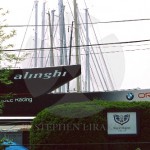
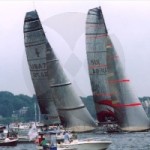
.png_sml.png)


